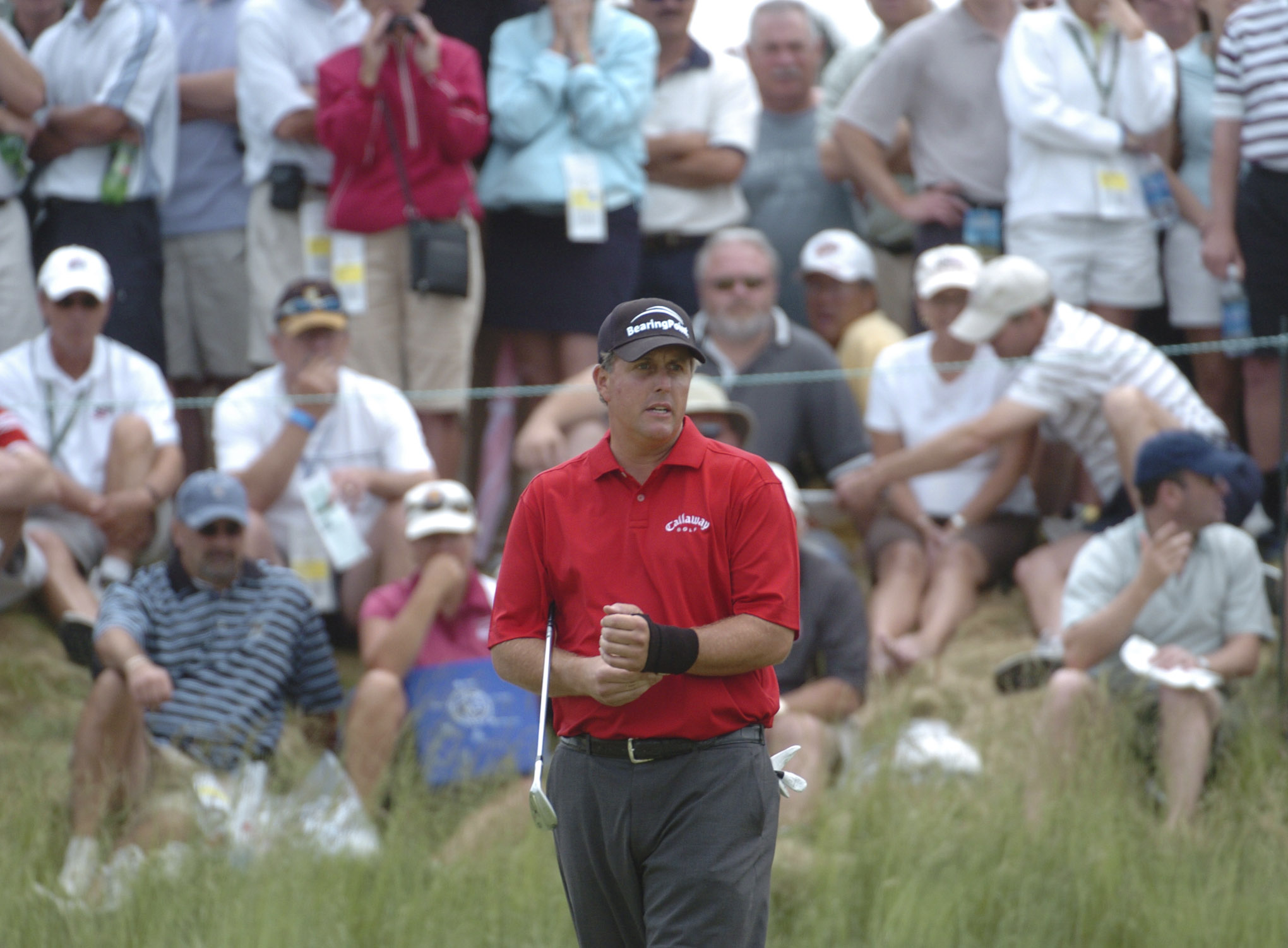It is not a time for excitement and anticipation. It is not a moment the players embrace or inhale the nostalgia and history.
Save that for the other majors. This isn’t a tradition unlike any other. Or glory’s last stand.
This is the U.S. Open, a four-day survival test, and it’s being staged for a record ninth time at Oakmont Country Club, the pit bull of Open venues.
Players already are using words such as stressful and trepidation, brutal and humbling. It is the second major of the year and the field of 156 players who will tee off today are approaching the start as if it’s an internal audit.
Phil Mickelson, who turns 46 today and is hoping to win the one major title that has escaped him after a record six runner-up finishes, called Oakmont “the hardest course I’ve ever played.”
“Every hole out here plays over par,” Mickelson said. “To approach a hole from the tee thinking birdie is a mistake.”
No player in history has won a U.S. Open with a score lower than 279. When Angel Cabrera won in 2007, he finished at 5-over 285 despite posting two of the seven subpar scores over four days.
Oakmont has no water and no trees on the 7,255-yard layout, and is considered the Jennifer Anniston of iconic venues because it takes very little to get the course ready for the national stage. Predictions range from Jordan Spieth saying he would take even par right now to Jason Day saying the U.S. Open might have a runaway winner.
“It accomplishes the goal that the members want, which is to have the hardest course in the world or in America or wherever,” said Mickelson, who has missed the cut just twice in 25 U.S. Open appearances, the most recent coming at Oakmont in 2007. “There’s no reprieve off the tee, there’s no reprieve into the greens, and there’s certainly no reprieve on the greens.”
Ah, the greens. They have been rolling the past couple days at 15 on the Stimpmeter, the device used to measure in feet the speed of the putting surfaces. But the United States Golf Association plans to put on the brakes and run them between 14 and 14.5 for the tournament. When Jack Nicklaus won the U.S. Open in 1962, beating Arnold Palmer in a playoff, he had one three-putt green in four rounds.
Part of solving Oakmont’s greasy greens is not just gauging the speed, it’s managing to put approach shots in the proper position to make putts. When Johnny Miller shot his final-round 63 in the 1973 U.S. Open, he hit all 18 greens in regulation and left only one putt — at No. 12, where the greens slopes away from the player toward the Pennsylvania Turnpike — above the hole.
“They probably are the toughest greens in golf,” said Justin Rose, who won the 2013 U.S. Open across the state at Merion.
“You can’t let your mind slip on these greens for one moment, or you’re going to be left with possibly a 10- to 15-footer on the next putt, if not worse,” said Spieth, the defending champion who will try to be the first to repeat since Curtis Strange in 1989. “So you really have to be cautious of it.”
Day, the world’s No. 1 player who has won seven of his past 18 starts, said he has never been more stressed in his life than he is right now. But he was talking about the expectations heaped on him. Toss in the hazards of Oakmont, a course with 210 sand bunkers and greens that tilt like a car with a flat tire, and the anxiety level is enough to make a Franciscan monk look jittery.
“It’s just because being No. 1 in the world, having a lot of expectations on you, having to practice so hard to keep that No. 1 spot, trying to win as many tournaments as I can, puts a lot of stress and pressure on your shoulders,” Day said.
Rory McIlroy, who has won four major titles that includes a record-setting performance in the 2011 U.S. Open, said there is nothing exciting about the prospects of playing a U.S. Open. He said the overriding emotion is more trepidation.
“You know you’re going to be put under a lot of pressure on basically every single golf shot you hit out there,” said McIlroy, the No. 3 player in the world. “So you have to be prepared for that. You have to be prepared for how mentally demanding it’s going to be, how much concentration you’re going to need out there.”
The USGA already is trying to be sympathetic. It has cut the secondary rough from nearly 6 inches to 4.5 inches because of much consternation on social media from the players about the density of the nasty stuff. Balls were disappearing quicker than a Doug Henning magic show.
“We did think the rough was a bit too penal, and this was before the players arrived,” said Mike Davis, USGA’s executive director.
Conversely, the first cut of rough was not penal enough — “We didn’t feel there was enough of a penalty there,” Davis said — so the USGA grew that portion from 2½ inches to 3¼ inches. Players will try to avoid the rough like the Zika virus.
“The most important shot is going to be the one off the tee because, if you play from the fairway, it’s going to make it a lot easier,” said Cabrera. “If you don’t hit fairways, it’s very difficult to hit greens.”
Gerry Dulac: gdulac@post-gazette.com and Twitter @gerrydulac.

Comments
Login Register Logout